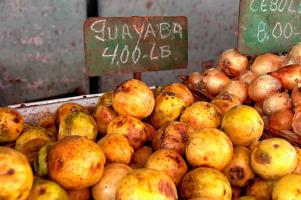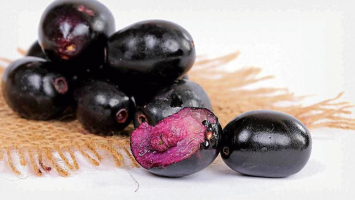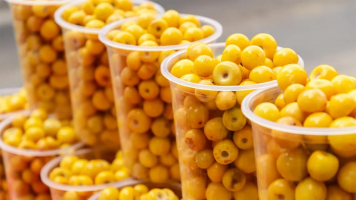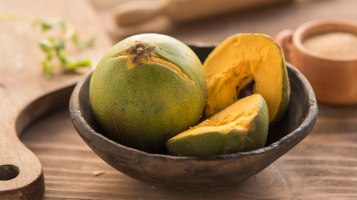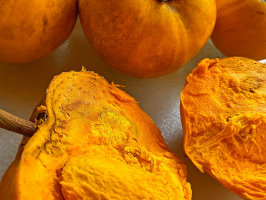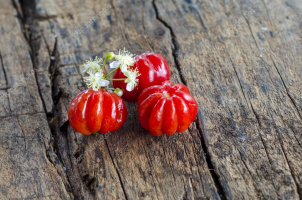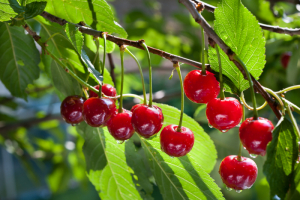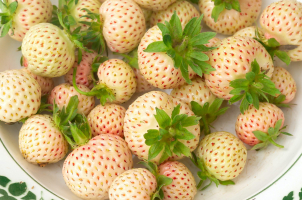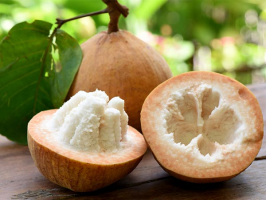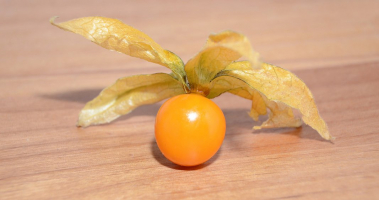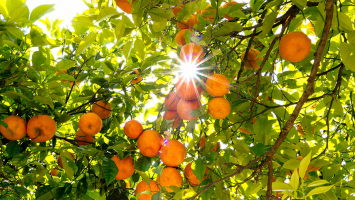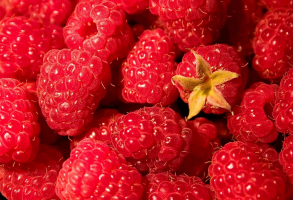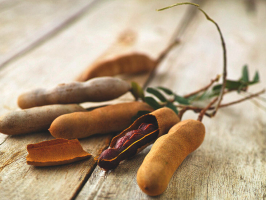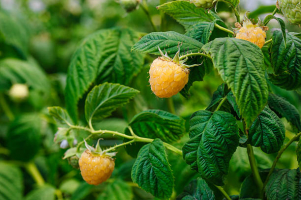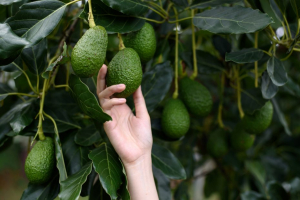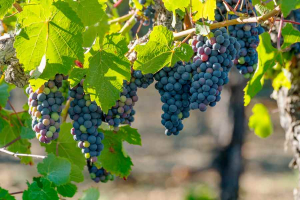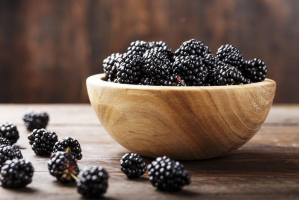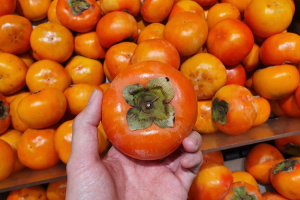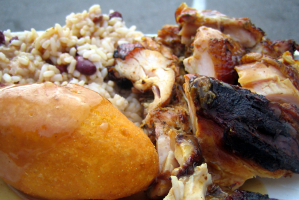Top 10 Most Delicious Jamaican Fruits
Jamaica is home to a wide assortment of fruits celebrated not only for their delicious tastes but for ample health benefits as well. Visitors can indulge in ... read more...these juicy delights no matter when their trip is planned. While some Jamaican fruits are available in other countries, many others can only be experienced while visiting the island. Below are the most delicious Jamaican fruits, let's find out!
-
Star apples, botanically classified as Chrysophyllum cainito, are rare fruits belonging to the Sapotaceae family. The fruits develop on large and fast-growing, evergreen trees that can reach 6 to 18 meters in height, and are found in tropical to subtropical regions worldwide, often planted along roadsides or in home gardens. Star apples are known by many regional names around the world, including Caimito, Tar apple, Pomme de Lait, Caminito, and Gold Leaf tree, and are primarily viewed as novelty fruit. The soft, juicy fruits are consumed mostly fresh, out of hand, but they can also be incorporated into desserts, salads, and beverages. In Jamaica, besides consuming fresh star fruit, people often mix it with sour orange juice to make delicious and unique juice for dessert. And the awesome recipe is called “matrimony”.
Star apples are small to medium-sized fruits with a spherical to oblate form with an average diameter of 5 to 10 cm. When the fruit is young, the skin is thin, glossy, and leathery; as it ripens, it turns reddish-purple, green, and deep purple. The skin adheres firmly to the rind as well, which has sticky latex that is inedible and varies noncolor depending on the variety. When mature, star apples become fragrant and matte in appearance with occasional creases. It is significant to note that the fruit's 33% skin and rind, which are inedible, should be thrown away. The only part of the fruit eaten is the flesh surrounding the seeds, which has a mild, sweet, and delicate flavor reminiscent of lychee, persimmons, and rambutan.
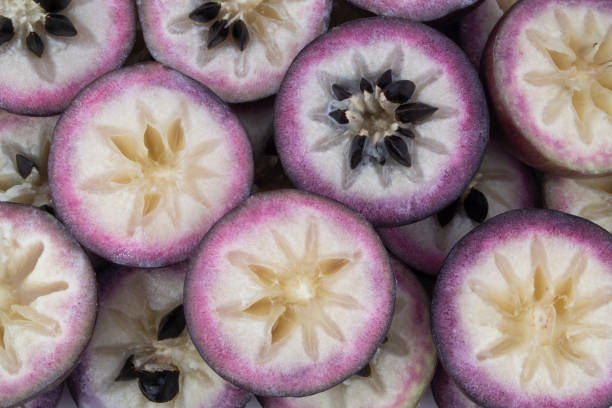
iStock 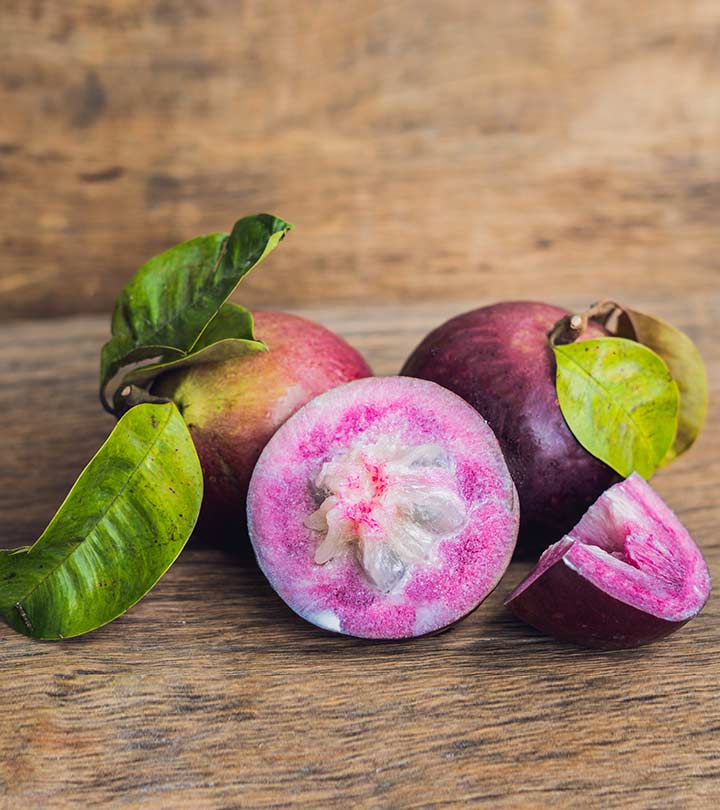
Stylecraze -
June plums, botanically classified as Spondias dulcis, are sweet and sour fruits belonging to the Anacardiaceae family. The oval fruits develop in large clusters on fast-growing trees in tropical forests and are known by many regional names, including Ambarella, Jew Plum, Kedondong, Buah Long Long, Golden Apple, and Yellow Egg. June plums are native to Southeast Asia and Polynesia, and over time, the trees have become naturalized in tropical regions worldwide. The fruits can be consumed at any stage of maturity and are favored for their firm flesh and tangy, sweet-tart flavor. June plums are not commercially cultivated and are grown on a small scale for sale in local fresh markets.
On a single tree, the fruits can be observed at different stages of development, looking solid green, solid yellow, or variegated shades of green and yellow. The fruits mature from green to yellow. Depending on the level of ripeness, the flesh beneath the skin is firm and ranges in color from pale yellow to white. A fibrous pit with a few flat seeds is also present in the flesh's middle. As the fruit ripens, the woody, coarse texture of the pit seeps into the flesh, giving it a rough texture. June plums have a sweet, pineapple-like flavor and are crisp, solid, and dense when fresh. The combination of sweet and tart flavors is suitable for making fabulous Jamaican drinks, preserves, and desserts. Moreover, you will be addicted to the taste of plum when consuming it with salt or mixing it in stews.
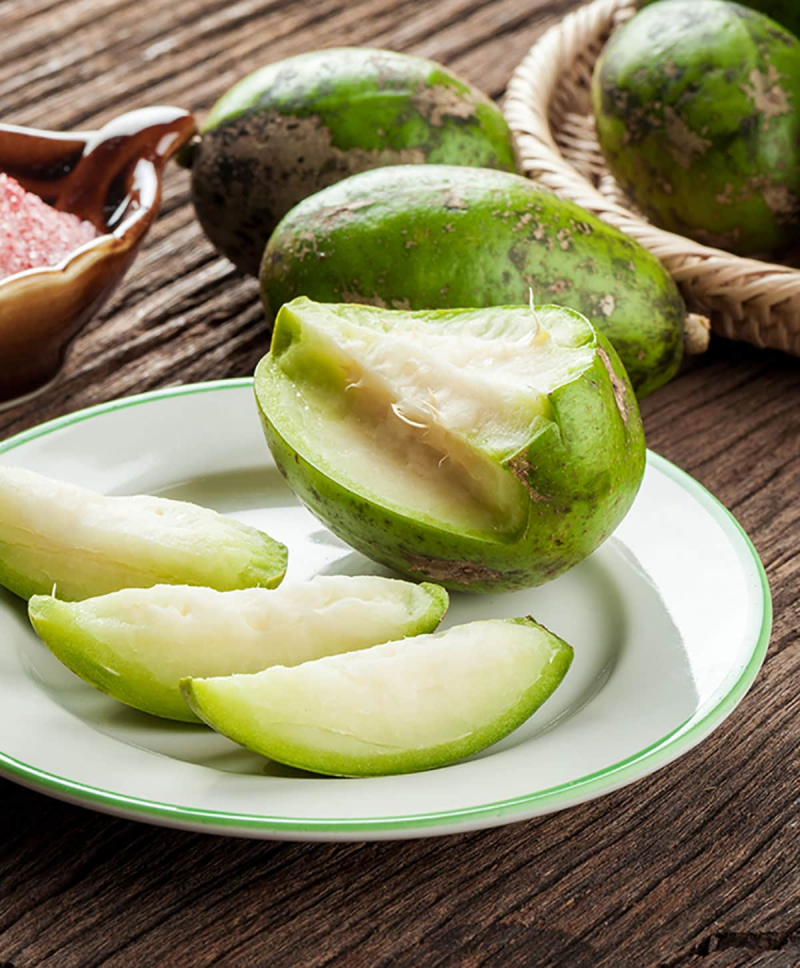
Healthier Steps 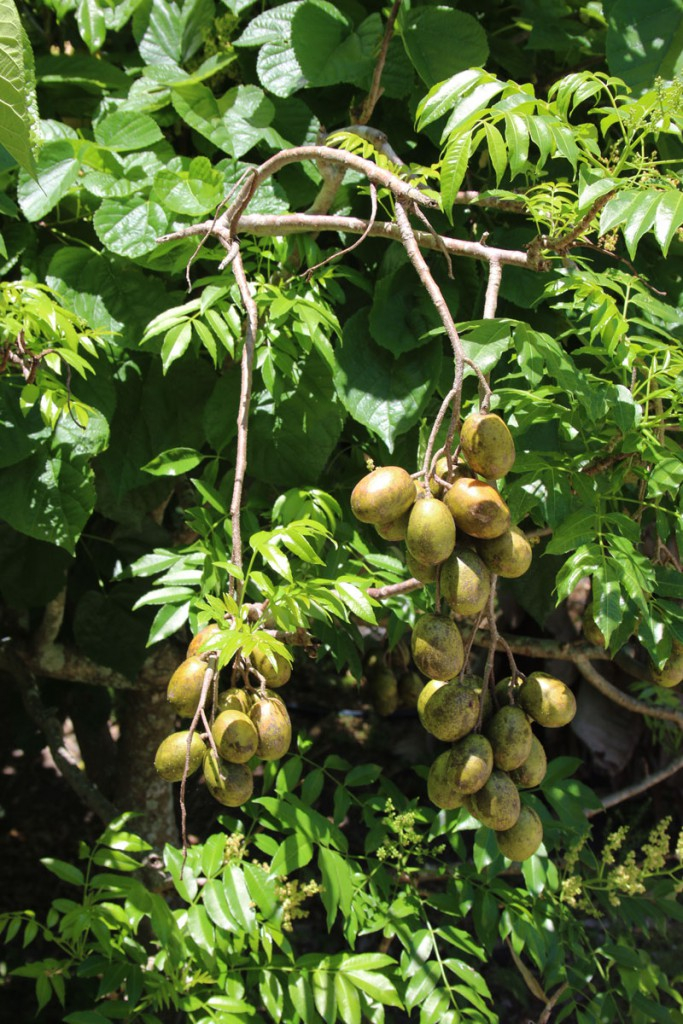
The Survival Gardener -
Ackee fruits, botanically classified as Blighia sapida, are unusual, tropical fruits found on large, evergreen trees belonging to the Sapindaceae or soapberry family. The fruits are native to West Africa and were spread to tropical regions of the Caribbean and Southeast Asia during the 18th century. Despite their naturalization worldwide, Ackee fruits are not commonly consumed due to their toxic and poisonous nature when unripe. Mature arils are the only parts of the fruit that can be consumed, and need to naturally ripen and split open before they are deemed safe for eating. In Jamaica, the fruits are affectionately described as “smiling” or “yawning” when they split open on the trees.
Fruits from ackees range in size from small to medium and have an oblong, oval, or pyriform shape. The fruit's skin or pod has texture, and as it ripens, it changes color from green to a vivid red or orange-yellow. The lobes will also separate as the fruit ripens, revealing reddish-pink membranes with numerous glossy, black seeds clinging to pale arils. When ripe, only the arils are edible; the pods, membranes, and seeds are poisonous and should never be eaten. Arils are firm, and spongy, and range in color from ivory to yellow. They also have a semi-smooth surface. The arils have a little tannic, sweet flavor that is evocative of avocado and almonds when they are uncooked. When the arils are cooked, they develop a soft and delicate nature with a rich, nutty, and buttery flavor.
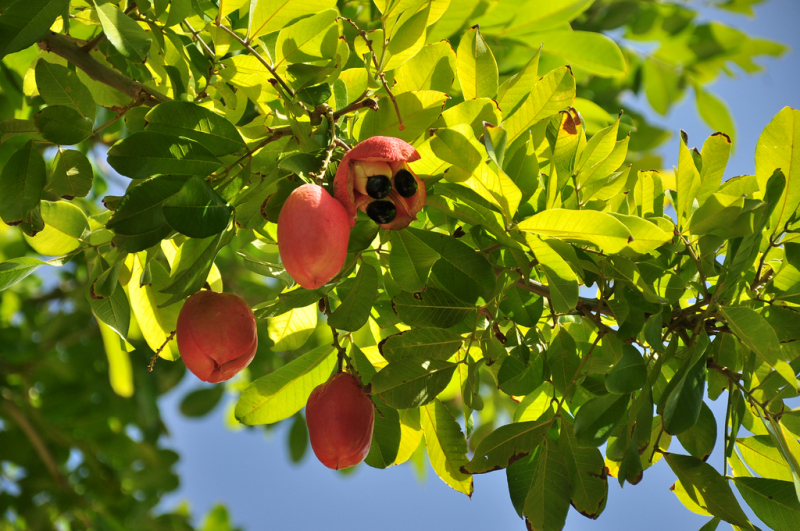
Nature's Poisons 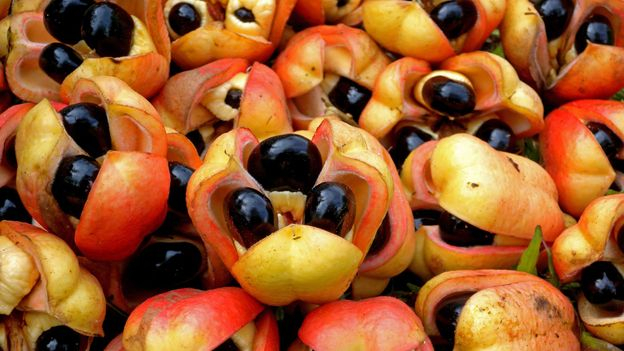
BBC -
Rambutan is a medium-sized tropical tree in the family of Sapindaceae. The name also refers to the edible fruit produced by this tree. Although rambutan is originally from Southeast Asia, you can find them throughout Latin America and the Caribbean. It is closely related to several other edible tropical fruits including lychee, longan, pulasan, and guinep. The fruit is an oval to round, single-seeded drupe that is 10–20 together in a loose pendant cluster, and it is 3-6 cm long (occasionally up to 8 cm long) and 3–4 cm wide. The name, which translates to "hairs", refers to the leathery skin, which is reddish (occasionally orange or yellow) and covered in fleshy, elastic spines. The fruit's spines commonly referred to as "spinterns", aid in transpiration, which may have an impact on the fruit's quality.
The rambutan fruit is primarily composed of water, 21% carbs, 1% protein, and very little fat. The canned fruit has 82 calories per 100 grams of reference weight and only moderate amounts of manganese (16% of the Daily Value) in terms of nutrition. The level of other micronutrients is low. The pleasant fragrance of rambutan fruit derives from numerous volatile organic compounds, including beta-damascenone, vanillin, phenylacetic acid, and cinnamic acid.
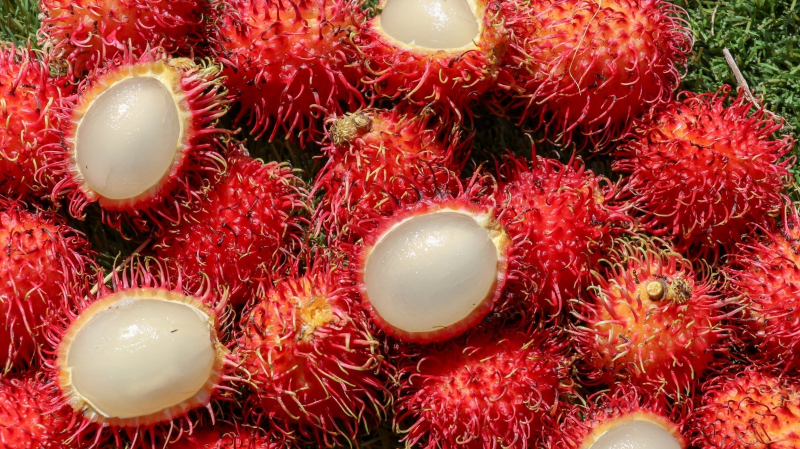
Mashed 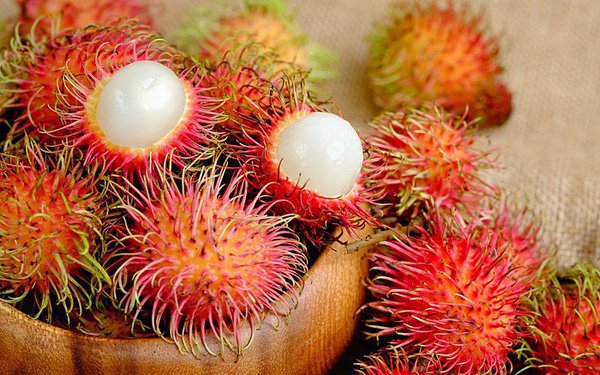
Vinmec -
Mamey (pronounced mah-may) apples are tropical fruits, botanically classified as Mammea americana and related to the mangosteen. Though they are sometimes referred to as Mamey sapote or Mamey Sapote Americana, they are not related to the red-fleshed, mamey sapote. Mammee apple is a popular fruit in Jamaica and South America. You can call it the Santo Domingo apricot or South American apricot. Mamey apples are also known as Santo Domingo apricot, Tropical apricot, or Mammee. Unlike other stone fruits that are considered to be drupes, Mamey apples are botanically identified as berries.
Mamey apples are a peculiar-looking tropical fruit. The fruit, which is oblong or almost oblong, can get as big as a tiny cantaloupe and have a diameter of between 10 and 20 cm. Like a mango, the light brownish-gray skin is firm and has a similar texture. The smooth, golden yellow or orange flavorful flesh has a pleasant scent. Depending on the degree of ripeness, it can either be hard and crisp or soft and juicy. A Mamey apple has a flavor that is similar to passionfruit and apricot with a tinge of berry flavor and some tang. Within the center of the fruit lies a seed much like a peach pit; smaller fruits will have one seed and larger fruits may have up to four. The portion of the flesh nearest to the seeds may be slightly bitter.
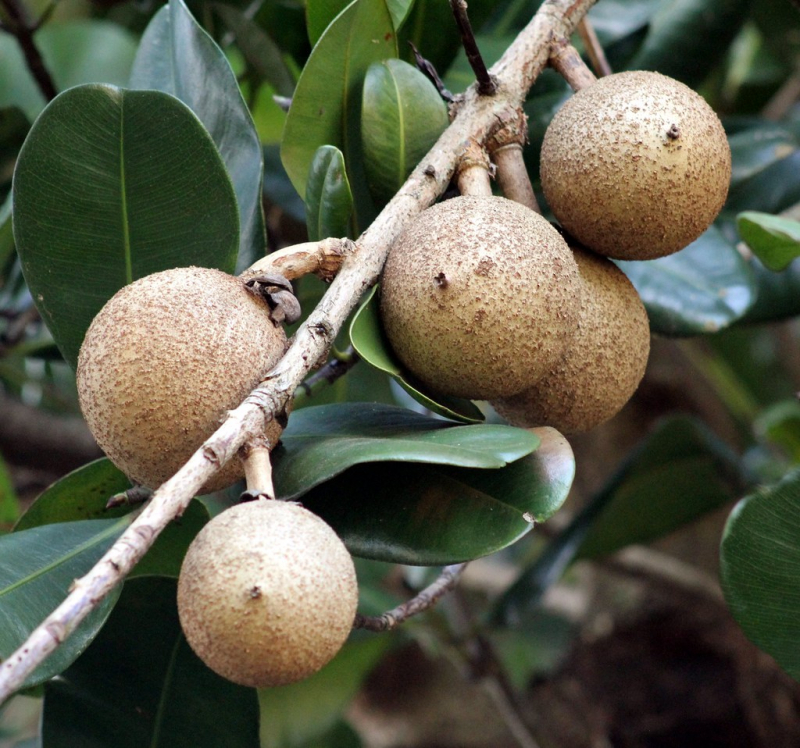
Flickr 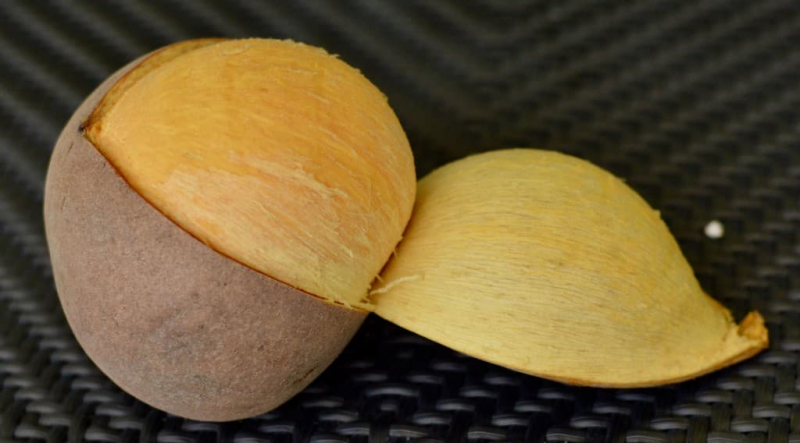
Sun Temple Food - -
Melicoccus bijugatus is a fruit-bearing tree in the soapberry family Sapindaceae. This fruit is native to Central America, the Caribbean, and South America, so many natives and tourists in Cuba love it. Its stone-bearing fruits are edible. It is also called Bajan ackee, genip, guinep, genipe, ginepa, kenèp, quenepa, quenepe, quenette, chenet, skinup, talpa jocote, mamón, limoncillo, canepa, skinip, kenepa, kinnip, limonussy, huaya, or mamoncillo. Guinep is beloved in many countries. Most natives and tourists love this fruit when traveling to Jamaica.
Trees have complex, alternating leaves and can grow as tall as 25 meters. The four elliptic leaflets on the leaves measure 5–12.5 cm in length and 2.5–5 cm in width. They are mainly dioecious plants, but occasionally there are autogamous trees. Green, empty drupes that are 2.5–4 cm long and 2 cm wide are produced by flowers with four petals and eight stamens. The color of its pulp is orange, pink, or yellowish, and it has a somewhat juicier and pastier texture. The fruit is a spherical drupe with a thin, fragile green peel that is about 2-4 cm in diameter. One (or, in rare cases, two) pale seeds that are encased in a delicious, orange, luscious, gelatinous pulp make up the majority of the fruit. The appearance of this fruit has many similarities with lychee. Many mamoncillos attach in bunches.
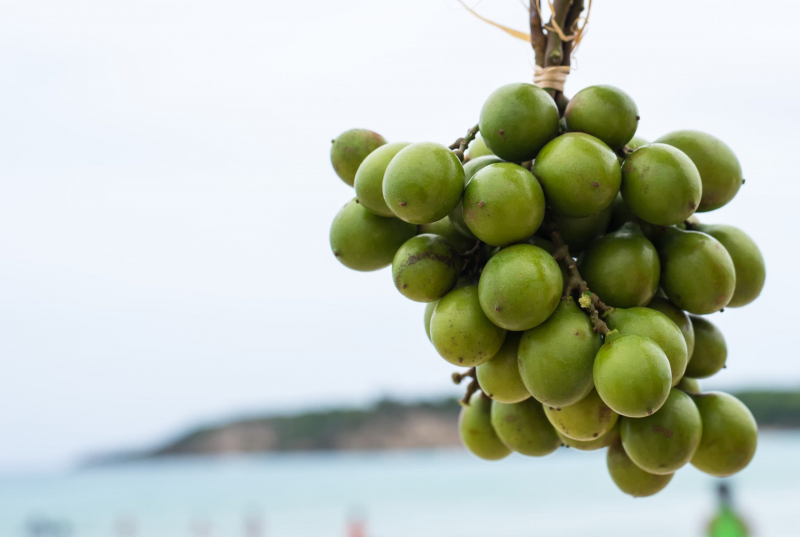
Healthier Steps 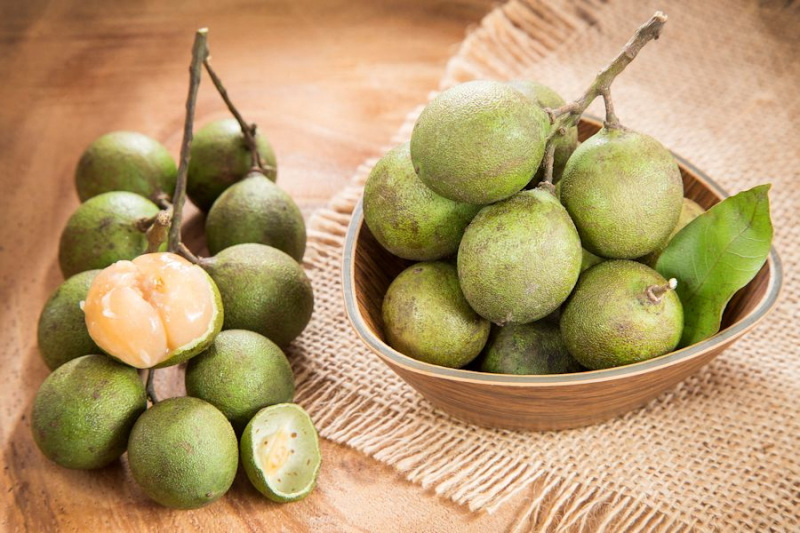
Trendiko -
Guava is a common tropical fruit cultivated in many tropical and subtropical regions. The common guava Psidium guajava (lemon guava, apple guava) is a small tree in the myrtle family (Myrtaceae), native to Mexico, Central America, the Caribbean, and northern South America. Guava is a common fruit that appears in many delicious Jamaican foods. Jamaicans love the refreshing glass of guava juice on summer days. Moreover, they create guava paste to consume with salty cheese. You will fall in love with the fantastic taste of guava cheese, jams, or fudges.
Depending on the species, guava fruits are either round or oval and range in size from 4 to 12 centimeters. They have a strong, distinctive scent that is reminiscent of lemon peel but less astringent. The outer skin may be silky and delicious or tough and can have a bitter taste. The thickness of the skin varies between species, and it is often green before maturation but can turn yellow, maroon, or green when it is fully developed. Off-white ("white" guavas) to deep pink, the pulp inside can be sweet or sour ("red" guavas). Depending on the species, the amount and hardness of the seeds in the core pulp vary.
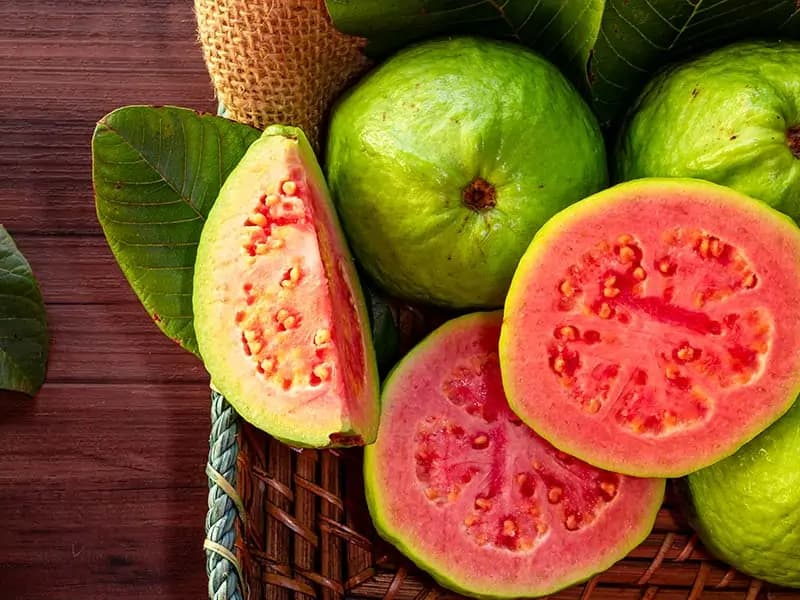
iStock 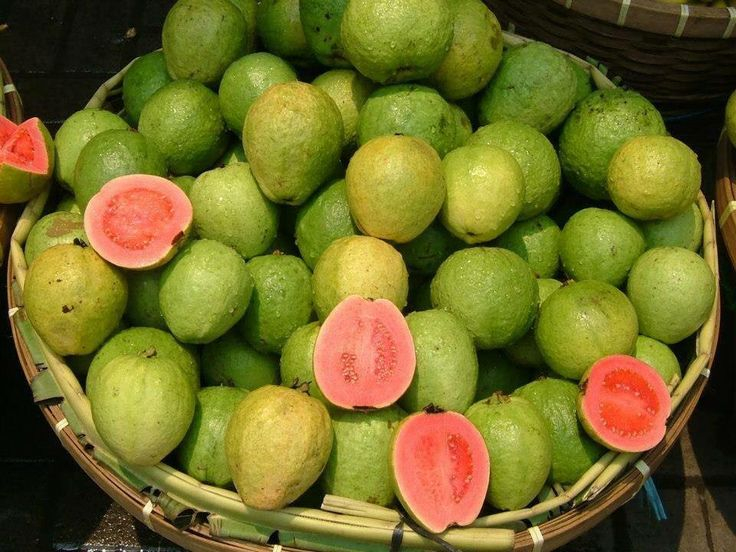
Pinterest -
The almond tree is one of the oldest nut trees that were cultivated by humans. The average almond tree enters the maturity period (and hence can produce good yields) from the 8th year of its age. Its life expectancy is estimated at 50 years. People often consume raw almonds or toast them before eating. You can catch it in many delicious Jamaican recipes. It is possible to buy almonds in many forms, from whole fruit to slivered and grounded forms.
The almond tree is grown for its edible fruit. You can eat the sweet almond (kernel) alone or add it to desserts and confections (sugared almonds, pastries, almond milk). Moreover, almond oil, which is extensively used in pharmacies, is made from bitter almonds (cosmetics and others). It is not advisable to feed livestock with almond oil production waste since it is harmful. The almond tree is grown for its edible fruit.
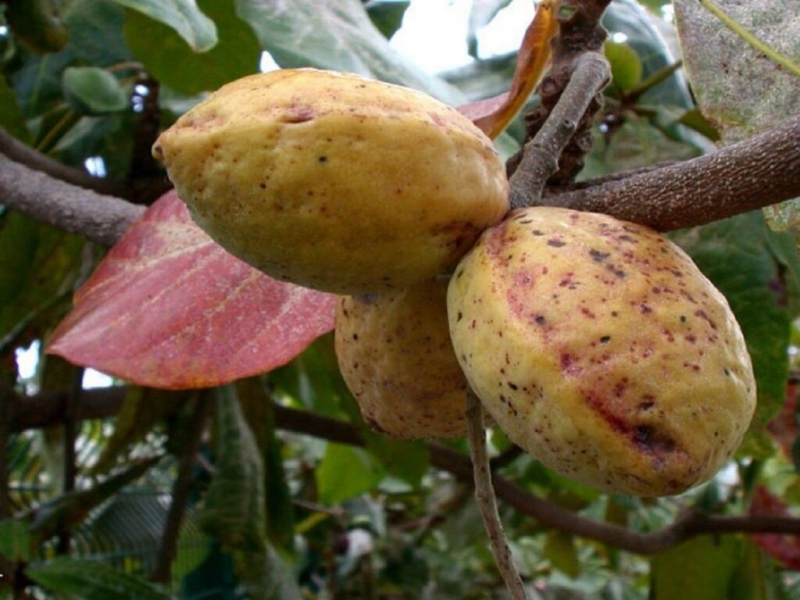
DNB Stories Africa 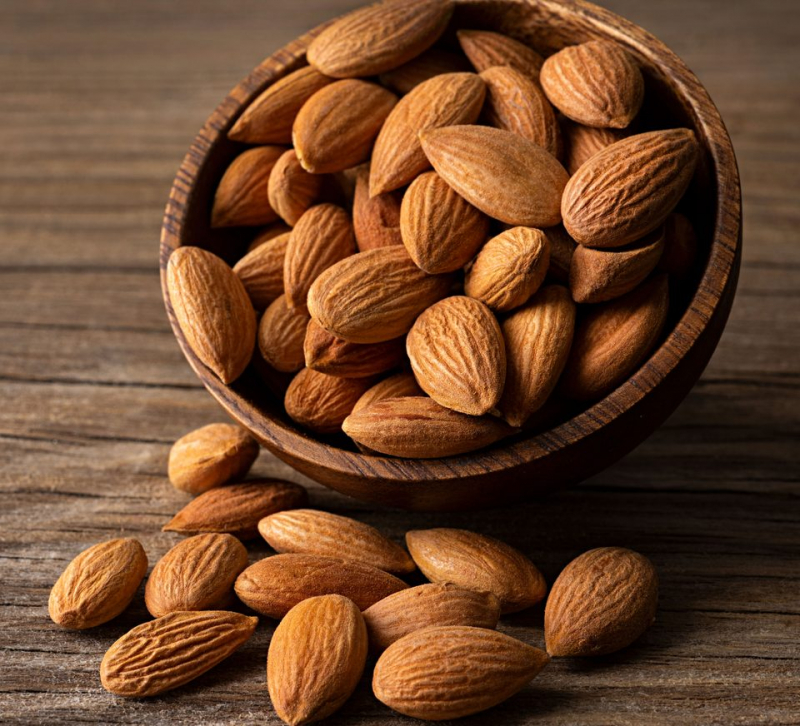
BBC Good Food -
Phyllanthus acidus, known as the star gooseberry, malay gooseberry, tahitian gooseberry, or simply gooseberry tree is a small deciduous tree with edible small yellow berries fruit in the Euphorbiaceae (Spurge family). Despite its name, the plant does not resemble the gooseberry, except for the acidity of its fruits. The plant is native to the coastal region of north-eastern Brazil and has been often wrongly ascribed to Madagascar, India, or Polynesia.
Small, monoecious, glabrous, and deciduous star gooseberry trees or shrubs typically reach heights of 2 to 9 meters. The dense, bushy crown of the tree is made up of thick, strong main branches that culminate in clusters of 15 to 30 cm long, deciduous, green branchlets. In addition to residential gardens, the plant can also be found growing in open disturbed areas, quarries, and gardens. Although it can thrive in a variety of soils, the plant likes damp locations. Twice a year, on average, the tree bears fruit and blooms. Flowers and fruits both start to appear at the same time. As a result, the tree typically has fruits hanging from it throughout the year. The fruit is mostly used for pickling and making preserves. You cannot miss the preserves and juices made from this fruit in Jamaica.
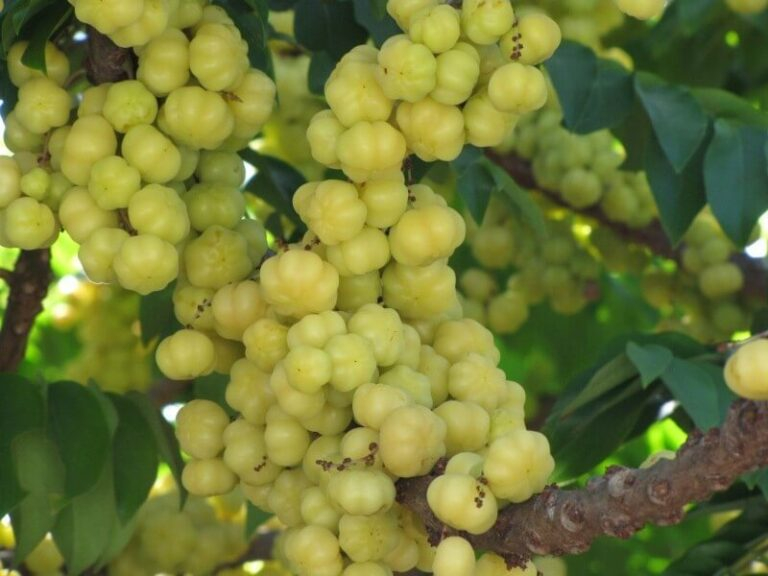
Planting Man 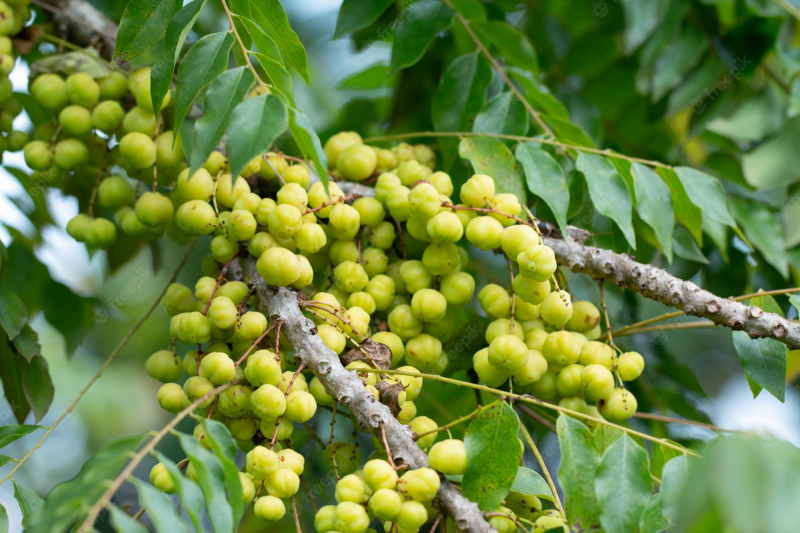
Freepik -
Noni, botanically classified as Morinda citrifolia, is a tropical fruit that grows on evergreen trees reaching 3 to 9 meters in height, belonging to the Rubiaceae family. Noni trees have historically been regarded as life-giving trees since the fruit, leaves, and bark are used for medicinal, cultural, and ceremonial purposes. In Jamaica, volcanic soil is the best condition for the growth of this fruit. People consider it a miracle fruit because it contains many nutrients that are good for healing asthma and cancer. It is used widely in the medical field.
Noni fruit typically has an uneven, oval to oblong form and is small to medium in size, measuring 5 to 10 centimeters in length and 3 to 4 centimeters in diameter. The fruits are lumpy and slightly rough, and they have numerous small, angular, flat faces with light brown spots on each face. The flesh of unripe noni fruits is extremely solid, fibrous, and tough, with a thin, firm skin that ranges in color from light to dark green. The fruit's flesh softens into a luscious, tomato-like consistency as it ripens, while the skin of the fruit transforms into a translucent yellow-white color. Numerous oval red-brown seeds are also contained in the meat. The flesh and juice also contain this strong smell and have a somewhat distinct, bitter, sharp, and acidic flavor.
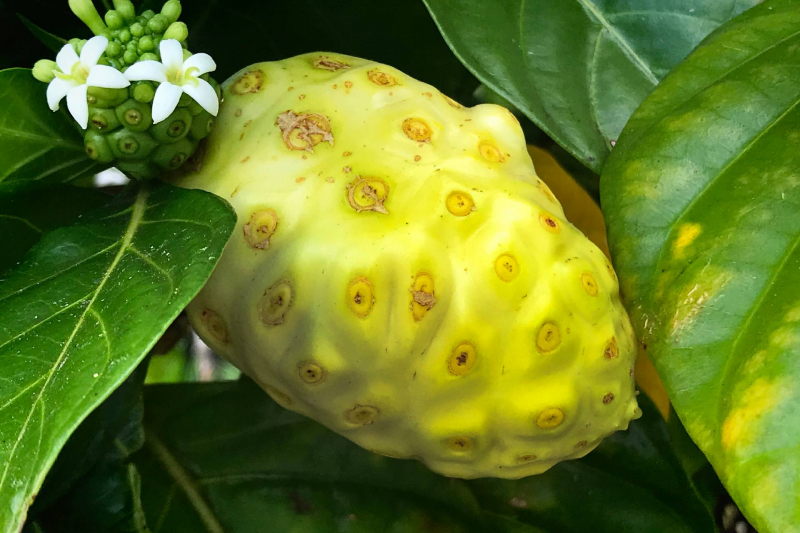
Fine Dining Lovers 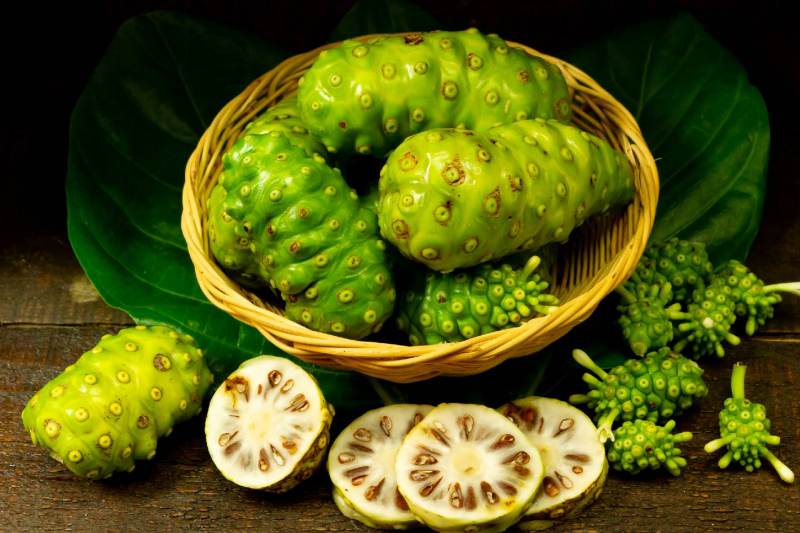
Fine Dining Lovers












